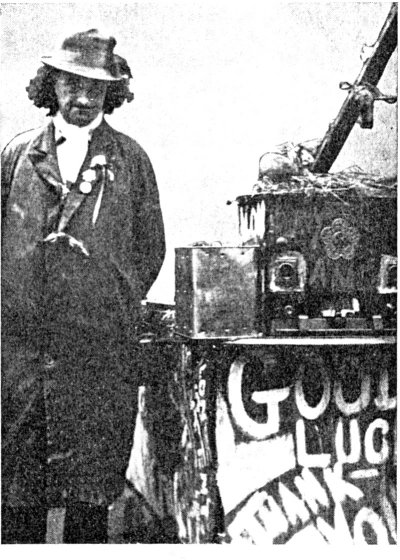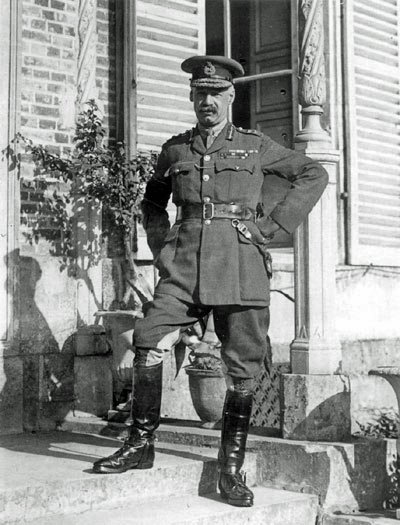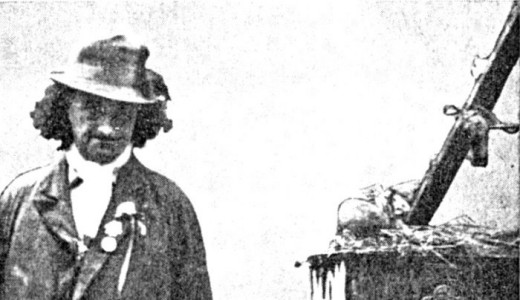The Mouseman of Kilburn – No, not that one!
Many people know about Robert Thompson, the furniture maker known as the Mouseman of Kilburn. But he lived in Kilburn, North Yorkshire. But it’s a fair bet hardly anyone knows that Kilburn in North West London had its own Mouseman.
Thompson, born in 1876, dedicated his life to the craft of carving and joinery in English Oak, and after hearing one of his craftsmen say that they were, “All as poor as church mice.” he carved a mouse on the church screen he was working on. The mouse became his company’s trademark and survives to this day.
Kilburn London’s Mouseman was interviewed by a reporter for the Willesden Illustrated Monthly at his lodging house in Kilburn in 1937. He was well known locally as he had spent years in Kilburn and Willesden exhibiting his ‘mouse circus’ in the streets. He said that his best days were Friday, Saturday and Sunday, with markets the best pitch for his performances.
The reporter simply records his real name as S. Jackman, giving no more detail than that. It’s a sympathetic article, looking beyond Jackman’s “rugged and weather-tanned features” to reveal a man of “astonishing intelligence and more than ordinary fibre and independence, a story full of surprises.”

The reporter and Jackman sat in the yard besides his “extraordinary paraphernalia”, the large box on wheels that Jackman trundled round the streets. In the photo, the long rod protruding from the box served as the ‘stage’ for a troop of white mice that performed gymnastic feats. There was also a small stuffed dog, Jackman’s faithful companion on the road until it died 15 years previously. From that time, it was exhibited in a straw bed on top of the box. It was one of the Manchester breed, said Jackman; ironically a type of terrier well known for its skill as a rat catcher!
Jackman supplied very few biographical details. His parents were English and emigrated to America, where his father worked in the Chicago stock yards. Jackman was born there but returned to England as a young man. It’s hard to establish what he did next, but he told the reporter he entered the armed forces, serving nearly 12 years in the Navy and Army, including World War I.
I joined the Coldstream Guards and was with the Russian Relief Force, in which I was a sergeant. I went to Murmansk and to Lake Onega.
He worked as a cook and often served meals to General Henry Rawlinson. At the end of World War I, Rawlinson was sent to Russia as the Supreme Commander of the Allied Forces who were attempting to overthrow the Bolshevik government. In August 1919, Rawlinson organised the evacuation of the Allied Forces from Murmansk and Archangel.

After the War Jackman started performing as a member of ‘Lord’ John Sanger’s Circus.
My job was that of a pot-pourri clown. I played 123 instruments – making music on almost everything. I got music out of a revolving bicycle wheel with piano wires stretched across it. I could make anything play.
Sanger’s Circus was started in the 19th century by the charismatic, self styled ‘Lord’ George Sanger and his brother John. They soon went their separate ways, dividing their circus property and setting up their own tented shows.
Jackman said he left Sanger’s “when they had the big fire at Tunbridge Wells.” But he was confused, in fact the fire broke out in the Big Top at Taunton, one hot July afternoon in 1920. About 1,500 people were watching the show when it’s thought a member of the audience dropped a lit match. It set fire to the grass and then the flames spread to the tent. Four people died and many others were badly hurt.

Jackman had worked as a piano tuner, but by 1937 there was very little demand: “I blame the wireless” declared Jackman. He had also been employed for a while as an inspector at a company making wirelesses. “I can do anything”, he confidently told the reporter, even including television among his many interests.
Jackman had started his ‘mouse circus’ after leaving Sanger’s in 1920. Before settling in Kilburn, he’d often walked to London from Southampton, pushing his box, accompanying the shows by playing a fiddle.
Where did the mice come from? Jackman said his sister in Tunbridge Wells kept his stock of 400 white and brown mice, and when he needed new performers he simply went and got them from her. One free source was now denied him:
In my piano tuning days I frequently discovered mice inside pianos and would capture them and train them.
The reporter asked Jackman why his hair was so long.
Well, so as to be different from anybody else.Colonel Cody (Buffalo Bill) and Barnum had long hair. It makes me look more like a showman.
Jackman never charged for his shows but passed round the hat at performances. His ambition was to buy a large tent and tour the country with his circus:
But the tent would cost £35 and the Mouse Man will have to find silver or many more coppers in his hat before he is able to realise his dreams.
World War II almost certainly put paid to Jackman’s street performances but other than the facts reported in the article, we haven’t been able to find out any more about the man. Does anyone know what had happened to him and his performing mice?


Comments
The Mouseman of Kilburn – No, not that one! — No Comments
HTML tags allowed in your comment: <a href="" title=""> <abbr title=""> <acronym title=""> <b> <blockquote cite=""> <cite> <code> <del datetime=""> <em> <i> <q cite=""> <s> <strike> <strong>